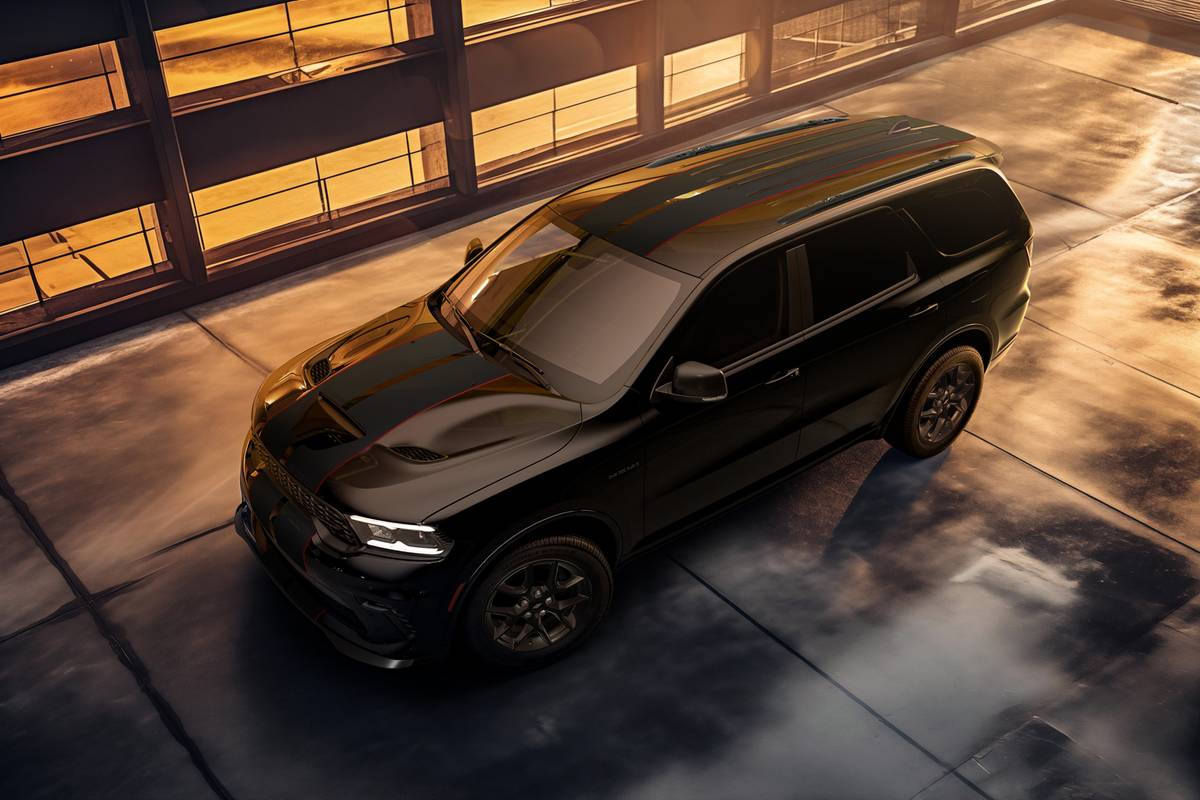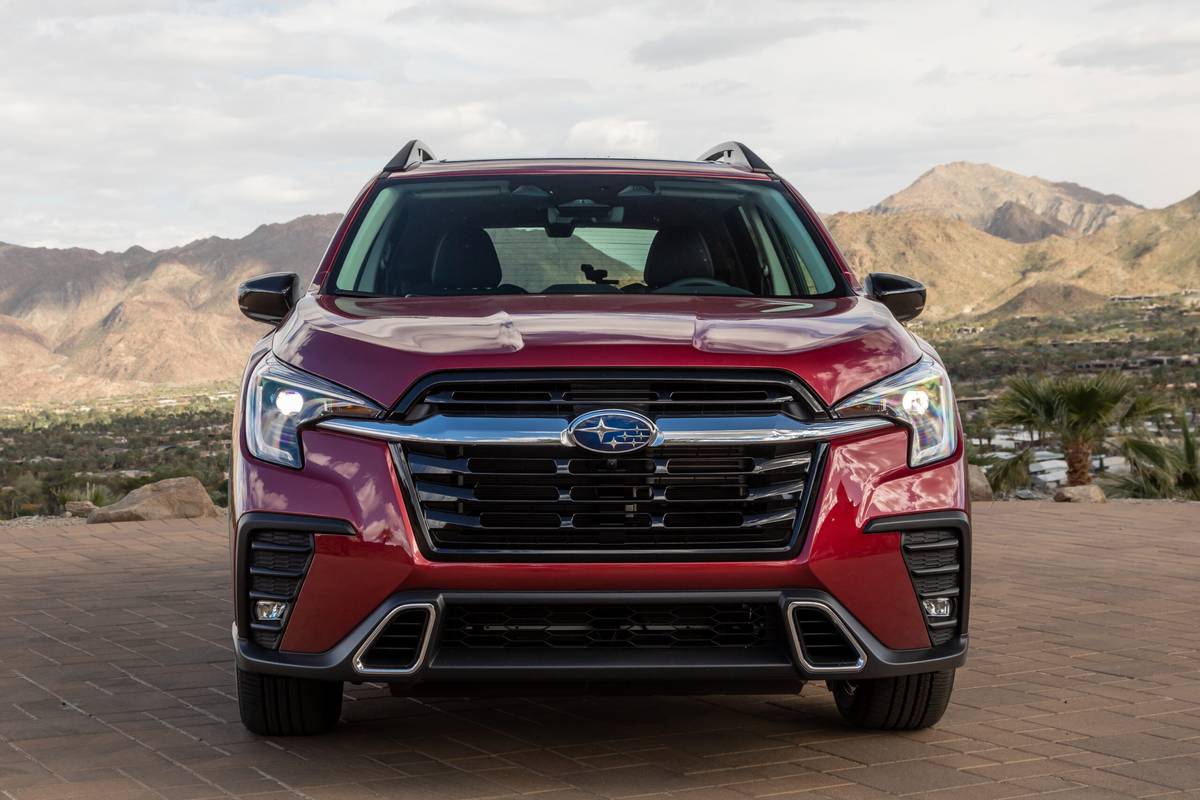chicagotribune.com's view
Caddy to fight BMW with own 3 letters–STS
NOVI, Mich. — An offhand remark from an executive pinpointed the reason the ’05 STS is replacing the ’04 Seville at Cadillac.
“The STS has the size of a BMW 7-Series, the nimbleness of a BMW 5-Series,” the executive boasted when the Cadillac sedan was unveiled here for a media ride and drive.
So BMW is the target?
Not surprising considering the STS is the third derivative off Cadillac’s rear-wheel-drive Sigma platform.
The first, the CTS sedan, takes on the BMW 3-Series; the second, the SRX sport-activity vehicle, takes on the BMW X5 sport-ute; and the third, this midsize sedan that’s 5 inches shorter than the front-wheel-drive Seville but 6 inches longer than the CTS, is primed to do battle with the BMW 5-Series or 7-Series or perhaps both.
The STS joins the CTS in offering rear-drive, Cadillac says, because it provides better balance and weight distribution for aggressive driving. Of course, the fact BMW offers rear-drive and has the reputation of building high-performance sports sedans was a factor, too.
After decades of preaching the gospel of front-wheel-drive and its ability to maneuver in the snow, Cadillac is singing the praises of rear-drive and its ability to maneuver on dry roads, whether straight or twisting.
Cadillac runs the risk of alienating those who remember rear-drive of a few decades ago and the tendency to slip and slide when trying to launch in snow. Many of its buyers do.
To combat that, Cadillac has added stability control with traction control and four-wheel anti-lock brakes as standard and has made all-wheel-drive a $1,900 option so motorists can maneuver with confidence in any season and for any reason.
The STS also offers a choice of a V-6 or V-8 engine. Cadillac notes that 70 percent of BMWs have 6-cylinder engines, and that’s the same take rate Cadillac is counting on for the STS.
Despite the BMW comparisons, the STS features the CTS louvered egg-crate grille. In profile, however, the new STS looks like a rear-drive Chrysler 300C upfront. Just a fluke, don’t you think?
The 3.6-liter V-6 develops 255 horsepower and produces 252 foot-pounds of torque. The 4.6-liter Northstar V-8 develops 320 h.p. and produces 315 foot-pounds of torque. The V-8 claims zero- to 60-m.p.h. acceleration in 5.9 seconds, the V-6 in 7.
Both V-6 and V-8 were available for testing here, as well as the V-8 and AWD. You can get AWD only with the V-8 for ’05; the V-6 won’t get it until ’06.
Both engines are teamed with new 5-speed automatics with manual mode shifting. OK, so BMW offers a 6-speed true manual in its 5-Series. Be patient. Cadillac brought out a high-performance CTS-V this year with 5.7-liter, 400-h.p. V-8 and a 6-speed manual. An STS-V is in the works, so maybe a manual will be added.
In traveling a variety of roads here, the V-8 prov ided the best response for merging, passing and climbing inclines. But the V-6 was a pleasant surprise, with ample torque to move off the line quickly and quietly. The V-6 has enough energy so Cadillac needn’t apologize for offering it, nor motorists for buying it.
The V-6 is rated at 17 m.p.g. city/24 m.p.g. highway, the best rating for an STS. The V-8 rating is 17/26, the V-8 and AWD rating is 16/22 and carries a $1,000 gas-guzzler tax.
Cadillac boasts STS is as nimble as a BMW 5-Series. But to make good on that boast, you have to equip the STS properly.
The package must include V-8, AWD, 18-inch Michelin radials designed for optimum handling and Magnetic Ride Control. With Magnetic Ride Control, an $1,800 option, the suspension automatically adjusts settings from soft for touring to firm for performance based on the road–and whether it’s smooth and flat or rough and twisting.
Front-drive has been the mode of choice among automakers since the ’80s because it allowed them to downsize the exterior while keeping interior dimensions intact . AWD is the mode to watch.
The STS has a full-time AWD system and stability control. Once wheel-slip is detected, stability control applies the brakes to the offending wheel and/or cuts back on the throttle to maintain control.
Most front-drive Seville fans probably won’t notice any difference in the switch to the rear-drive STS. Seville seemed to respond a bit quicker steering-wheel input when you wanted to change direction. To get the same steering response, you need to go the AWD route with STS.
The STS also offers a variety of novel features, such as remote start so you can stay in the house to keep warm in the winter or cool in the summer and just push a button the key fob to start the car.
While the Chevrolet Malibu offers that feature now, the STS offers a major upgrade. It also will activate the climate control to heat or cool the car and turn on the front and rear window defrosters based on the outside air temperature.
If you opt for ventilated leather seats, the remote start will also activate seat heaters or coolers based on outside temperature.
One word of warning from experience, however. Those seat coolers are a wake-up call. They act very quickly on a hot, humid day and feel like someone pressed an ice pack against your back and bottom.
STS also offers an optional navigation system with a choice of male or female voice in five languages as well as front- and side-impact air bags and front- and rear-seat air-bag curtains; OnStar emergency communication system; ultrasonic park assist that beeps if you get too close to an object when parking or backing up; acoustic glass in the windshield and side windows to keep outside noise from the cabin; and a horn that chirps three times as a warning if you exit the car without the key.
Other options include adaptive cruise control that automatically applies the brakes if you approach another vehicle too closely, and Intellibeam headlamps that automatically switch from bright to dim when you come within 500 feet behind a vehicle or when you get within 2,000 feet of an approaching car.
A couple of gripes–rear-seat room is a tad tight and the trunk is deep but doesn’t stand very high.
The biggest gripe is pricing complexity. The V-6 STS starts at $40,300, the V-8 at $46,800 but add $1,900 for AWD. Sounds good, but check all the boxes on the option list, and the sticker reads $62,765. While there are a few free-standing options, such as a $1,200 power sunroof, just about everything comes in mix-and-match packages that quickly add $2,000 to $8,000.
Option packages, for example, bring you a navigation system, Bose sound system with 15 speakers, heated rear seats, decklid spoiler, polished wheels, XM radio, power lumbar heated seats, CD player, universal garage door opener, and interior wood trim. They come in combination with such features as adaptive cruise control, Intellibeam headlamps and Magnetic Ride Control.
TEST DRIVE
2005 Cadillac STS
Wheelbase: 116.4 inches
Length: 196.3 inches
Engine: 4.6-liter, 320-h.p. V-8; 3.6-liter, 255-h.p. V-6
Transmission: 5-speed automatic with manual mode shifting
Fuel economy: 17 m.p.g. city/24 m.p.g. highway with V-6; 17/26 with V-8; 16/22 with V-8 and AWD, which adds a $1,000 gas-guzzler tax
Base price: On sale next month. $40,300 with V-6; $46,800 with V-8
Price as tested: Varied by model tested but among popular options, all-wheel-drive runs $1,900, power sunroof $1,200 and adaptive cruise control with head-up display $2,300. Add $695 for freight. Most options in packages.
Pluses: Rear-wheel-drive replacement for front-drive Seville. Stability control with traction control standard in all models. Neat features, such as remote start that an heat/cool seats and defrost windows while you wait. All-wheel-drive available for all-season motoring. Five inches shorter than Seville for easier maneuverability, but 6 inches longer than CTS for more cabin room and comfort.
Minuses: Pricing–if you add all the bells and whistles, you can top $60,000. Gas-guzzler on AWD V-8.
Latest news



